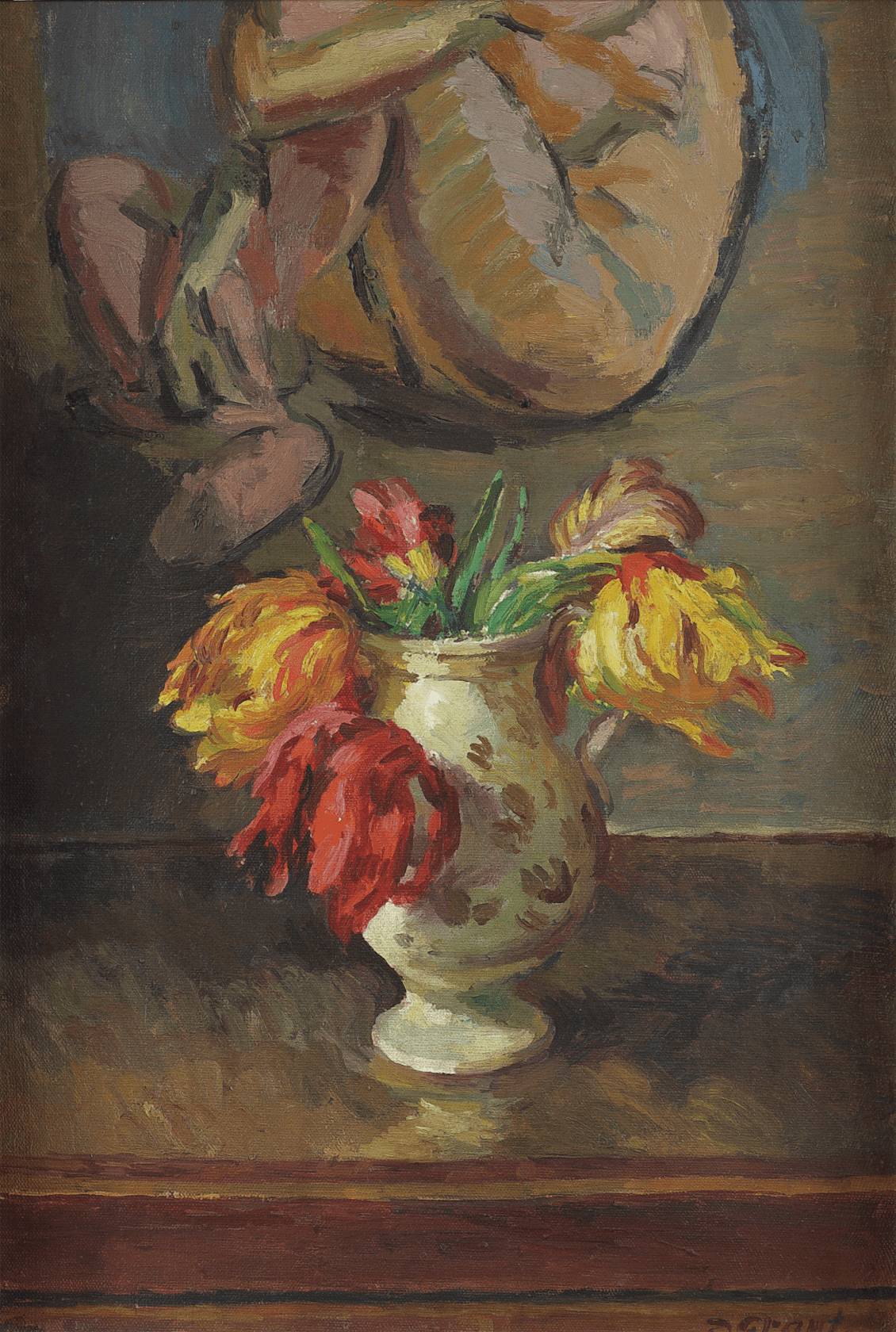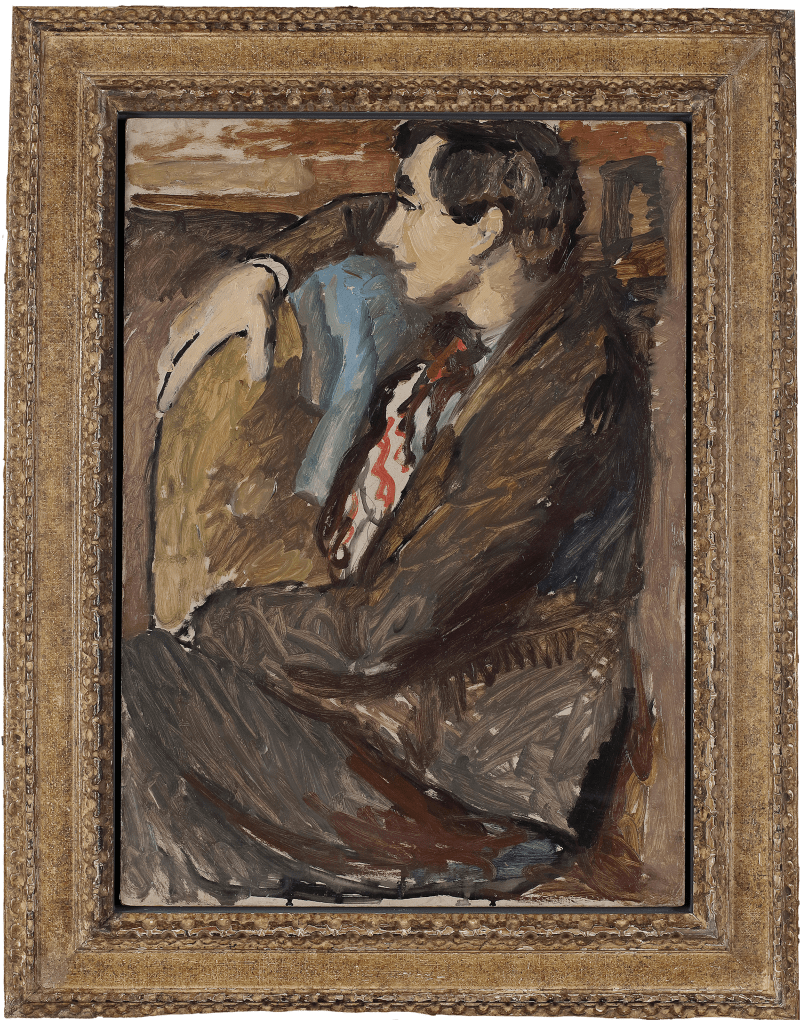Duncan Grant’s reputation as an artist rests, in part, on his still-life works, which from the outset of his career were well received by collectors and critics alike. Parrot Tulips is a good example of Grant’s work in this genre and was likely painted at Charleston in preparation for his exhibition at the Leicester Galleries in May 1957.
Parrot Tulips exemplifies Grant’s facility in reanimating traditional genres – still life and the nude – with a modern sensibility. A vase spills over with tulips rendered in brisk strokes, their ephemeral beauty knowingly captured at the point of fading. Beyond, seemingly propped up against a wall, is a painting of a nude figure. This imaginative arrangement of forms reminds us of life at Charleston, where art became an integral part of the furnishings and coexisted alongside the artists and their visitors.
Grant painted Parrot Tulips when he was in his early seventies and was consciously revisiting the visual languages he...
Duncan Grant’s reputation as an artist rests, in part, on his still-life works, which from the outset of his career were well received by collectors and critics alike. Parrot Tulips is a good example of Grant’s work in this genre and was likely painted at Charleston in preparation for his exhibition at the Leicester Galleries in May 1957.
Parrot Tulips exemplifies Grant’s facility in reanimating traditional genres – still life and the nude – with a modern sensibility. A vase spills over with tulips rendered in brisk strokes, their ephemeral beauty knowingly captured at the point of fading. Beyond, seemingly propped up against a wall, is a painting of a nude figure. This imaginative arrangement of forms reminds us of life at Charleston, where art became an integral part of the furnishings and coexisted alongside the artists and their visitors.
Grant painted Parrot Tulips when he was in his early seventies and was consciously revisiting the visual languages he had pioneered in the 1910s and 20s. The painting is, in many ways, a summation: confident in execution, unorthodox in composition, and unapologetically sensual in spirit. It stands as a compelling expression of Grant’s continued inventiveness and his capacity to unite technical accomplishment with a distinctly Bloomsbury humour.











